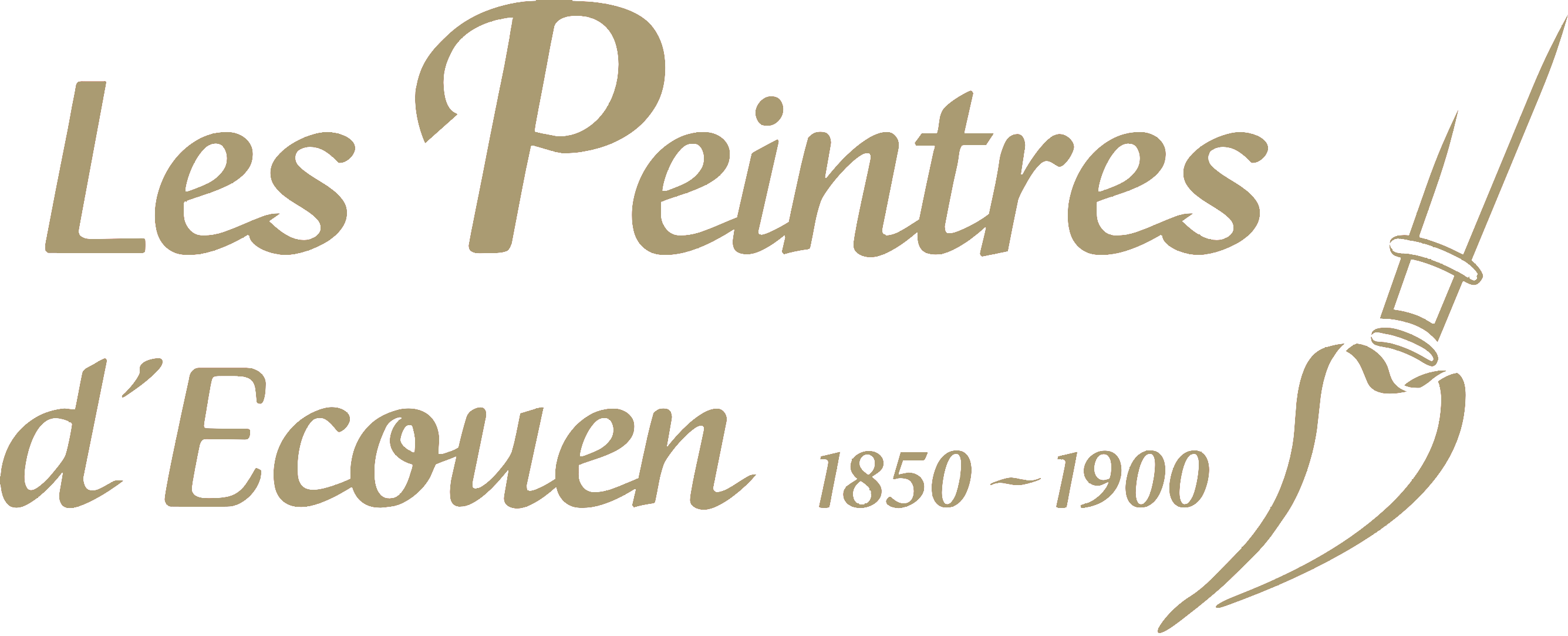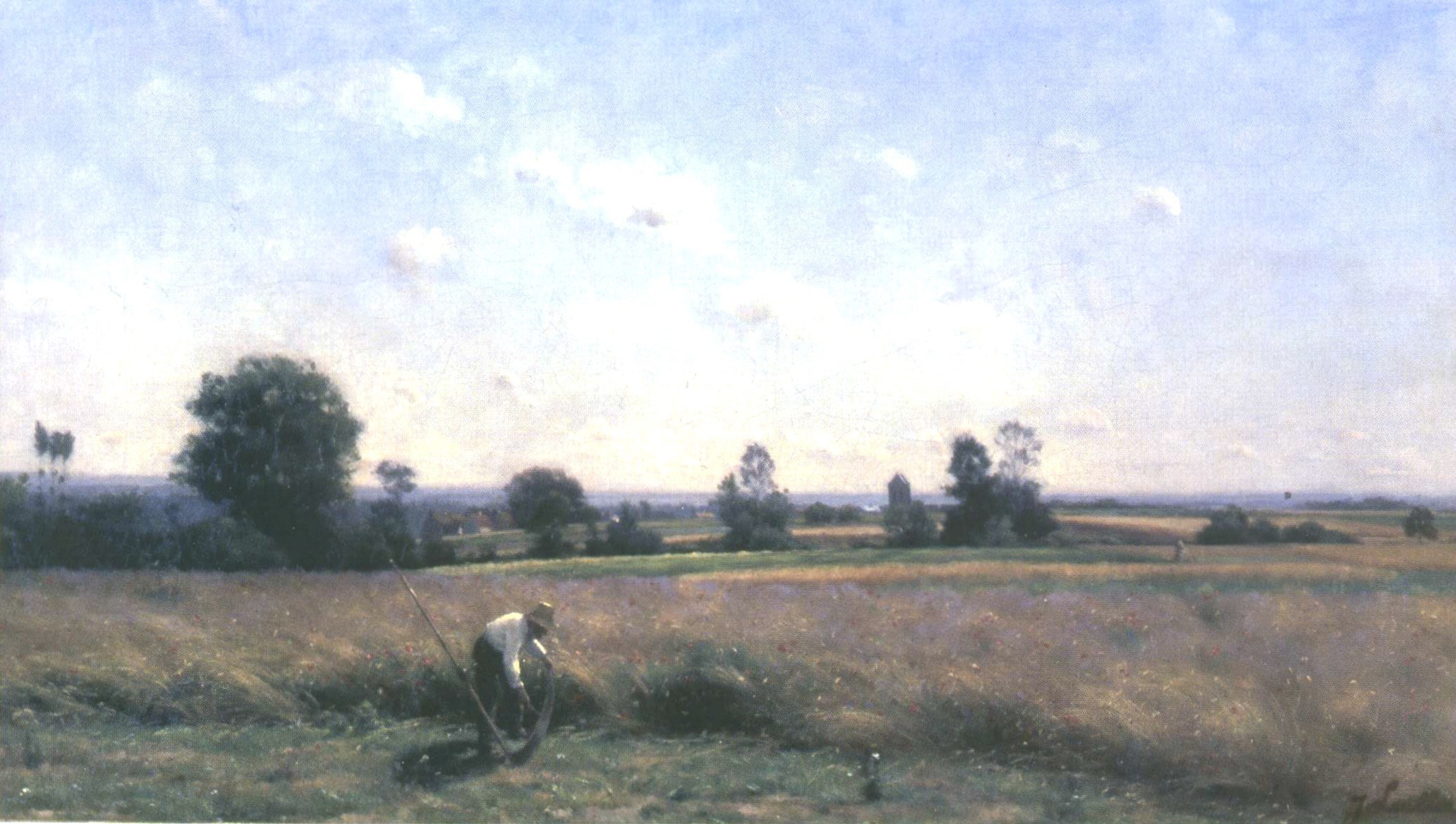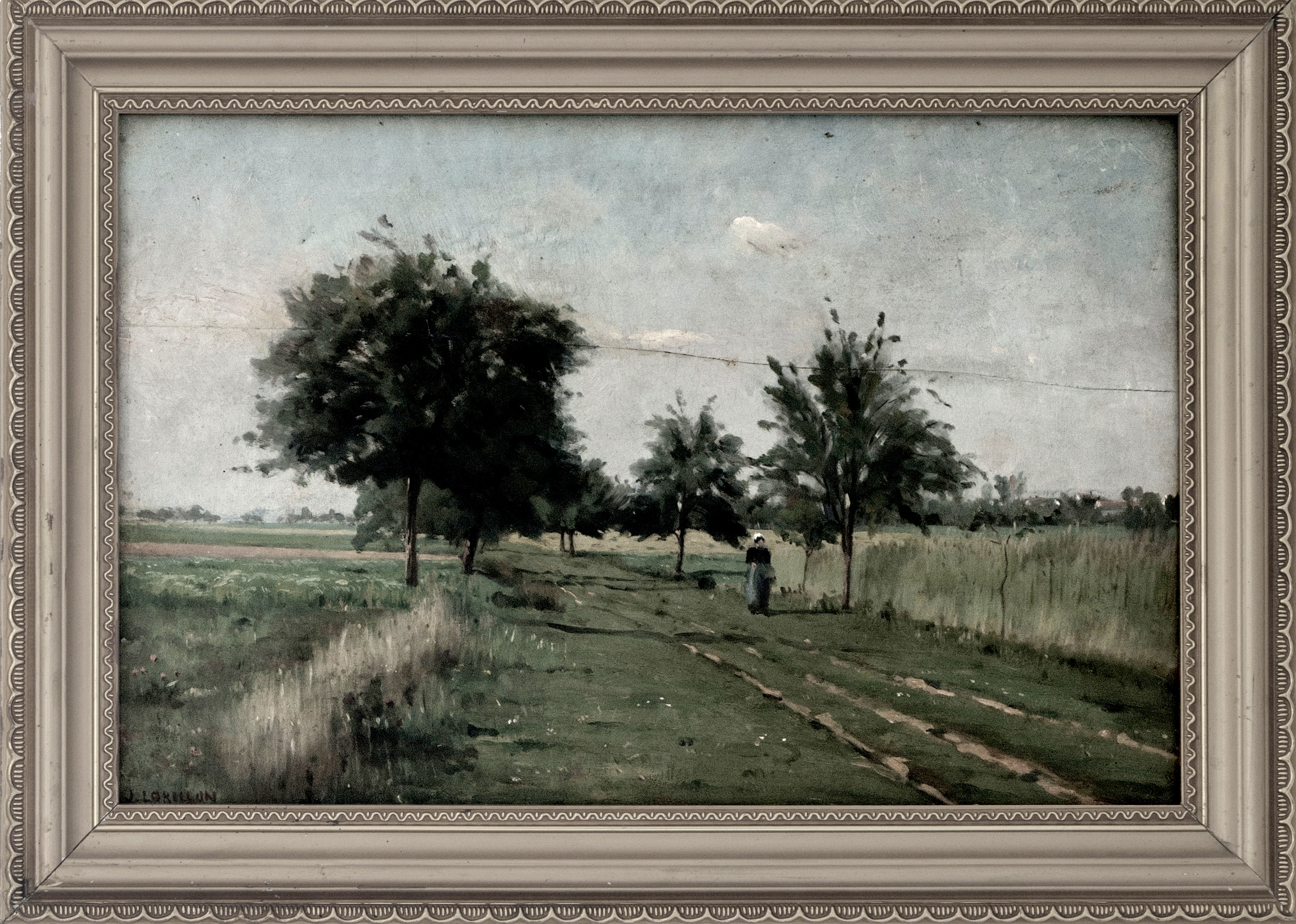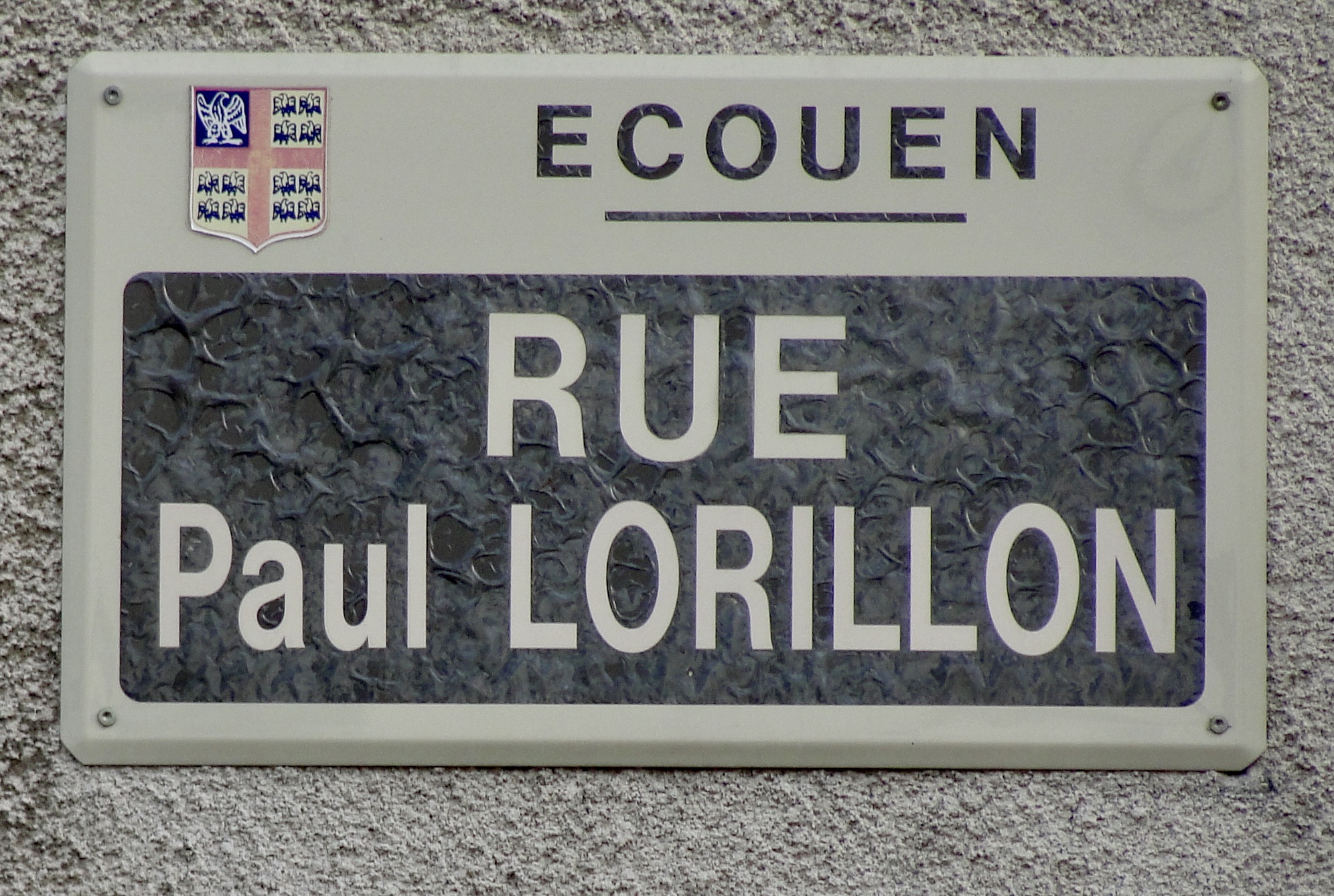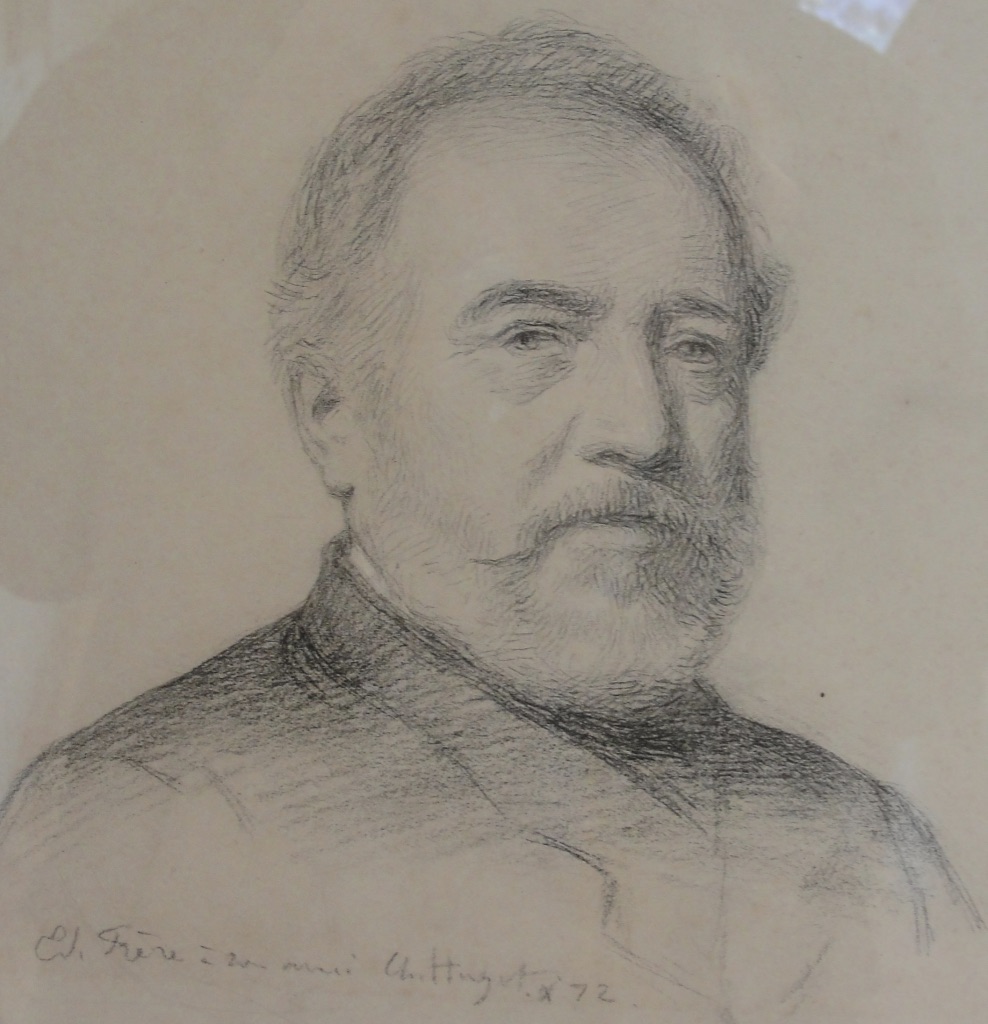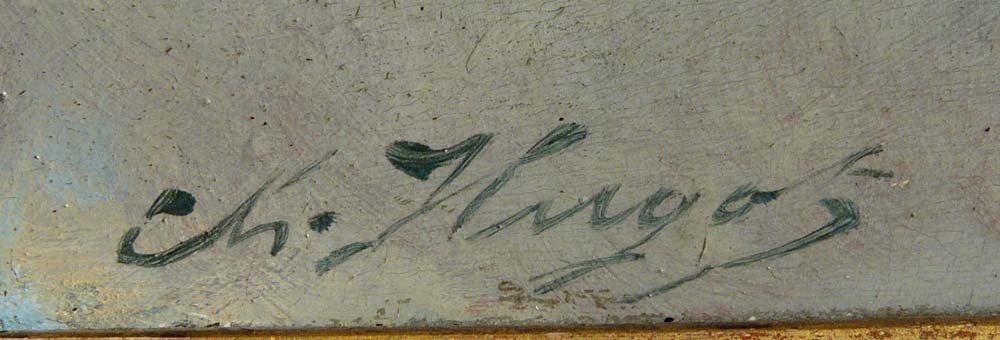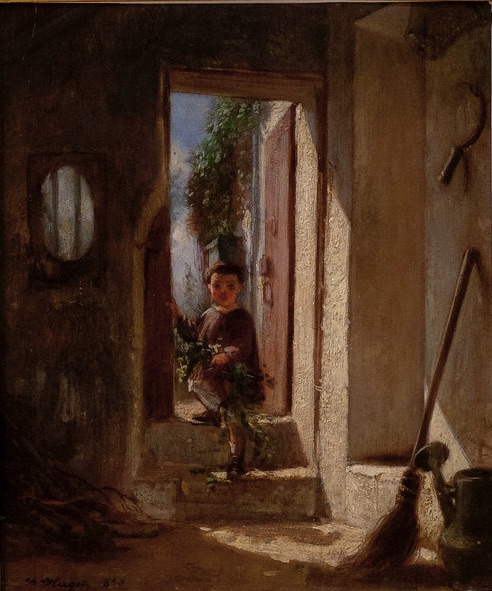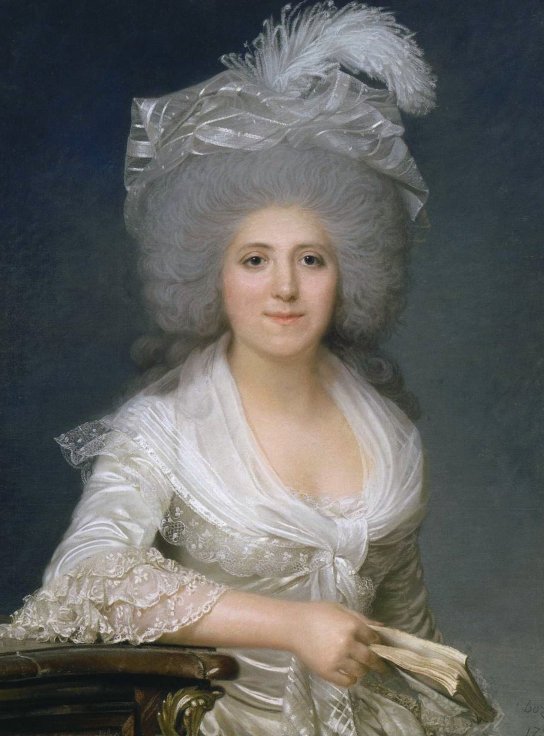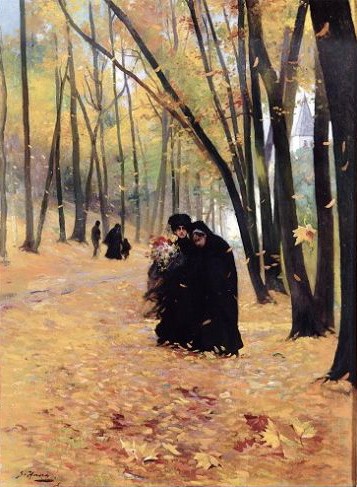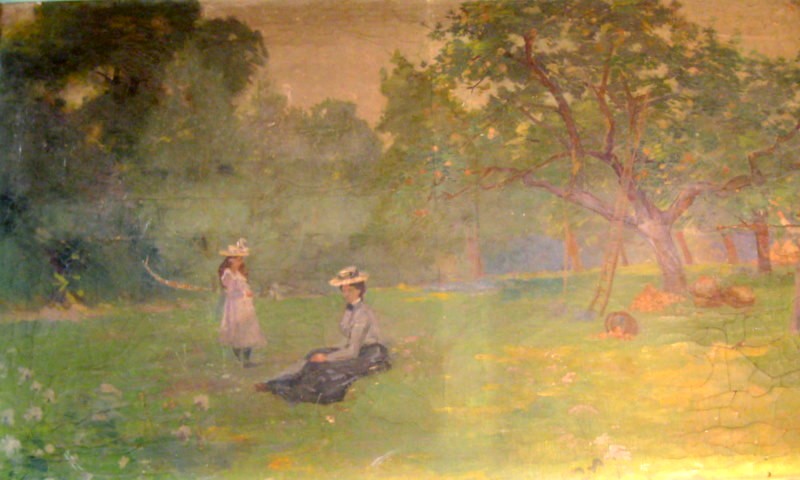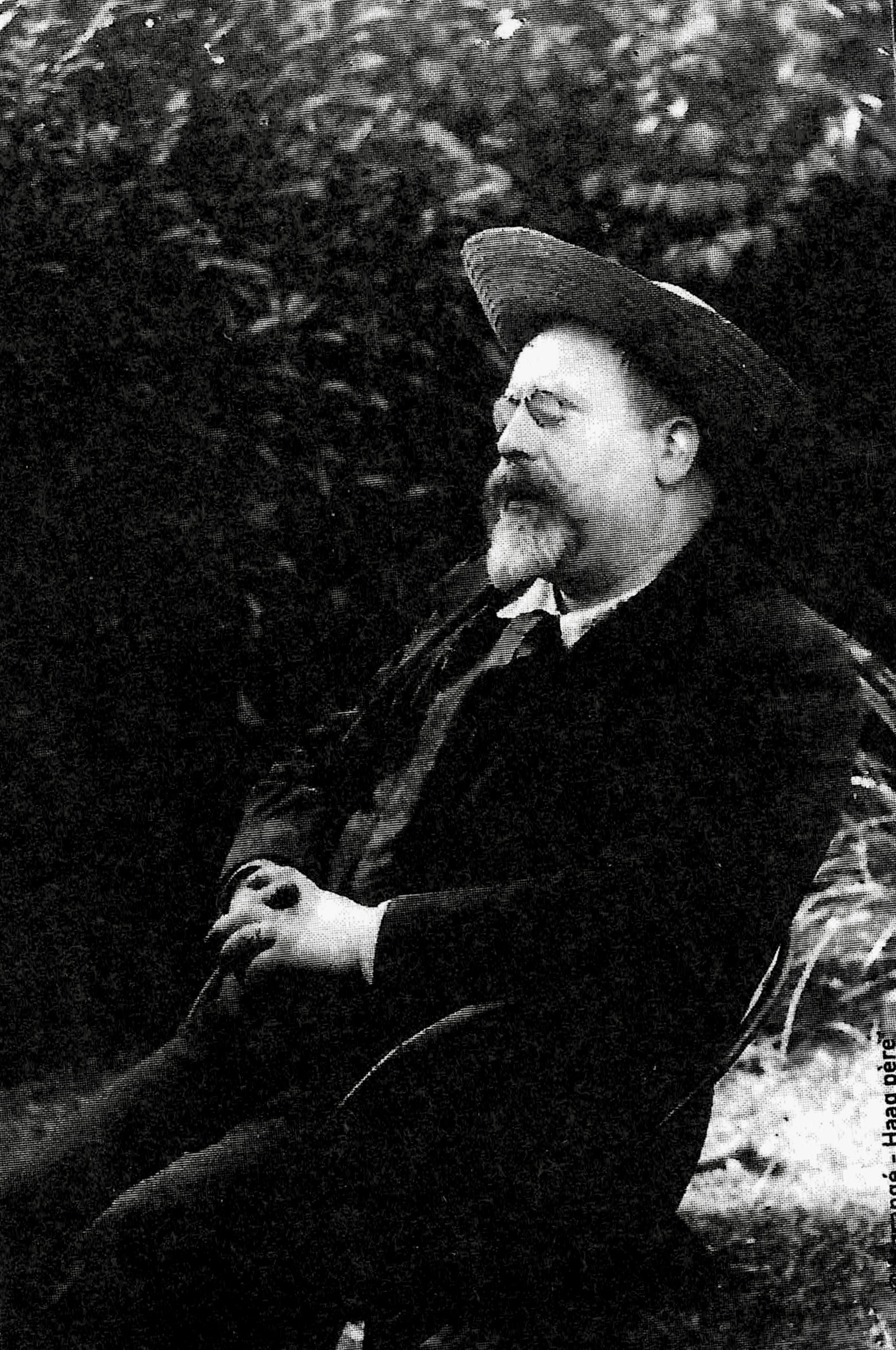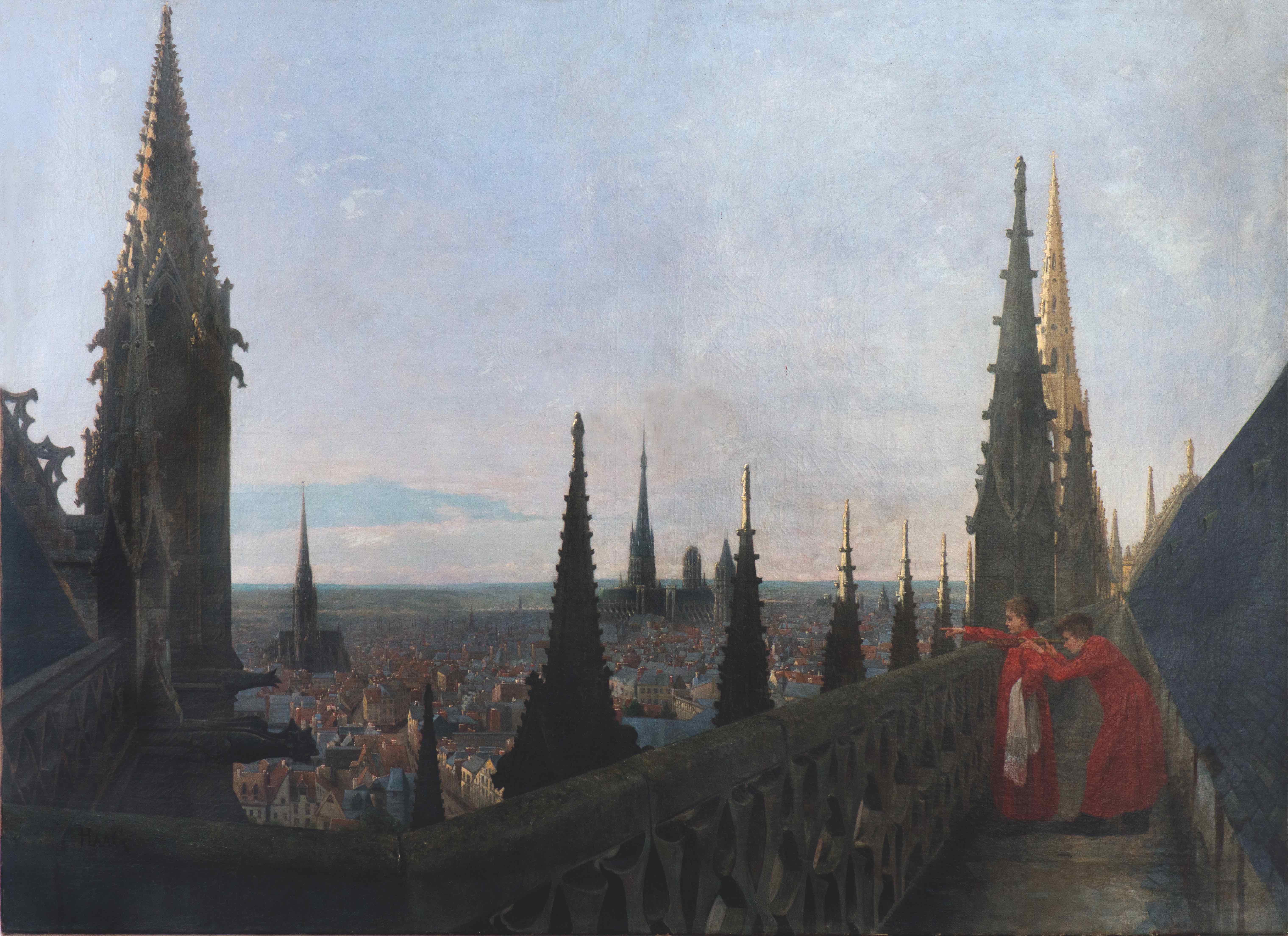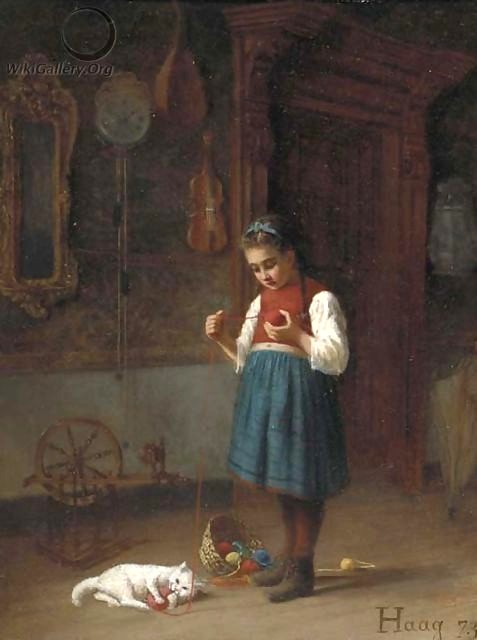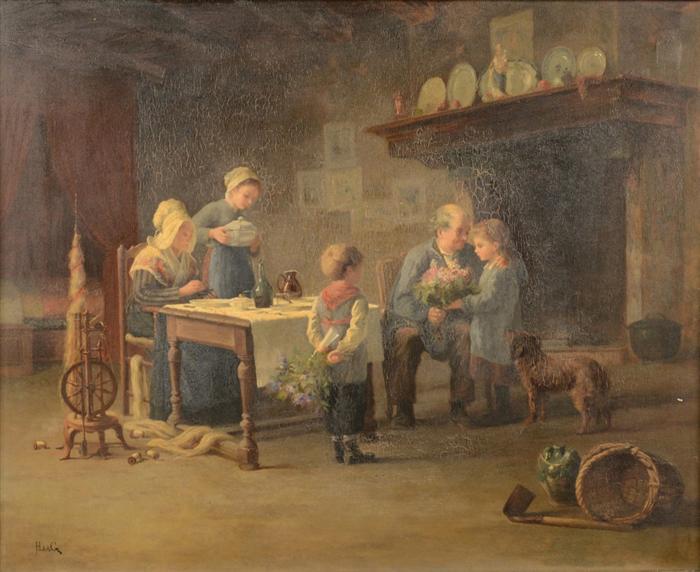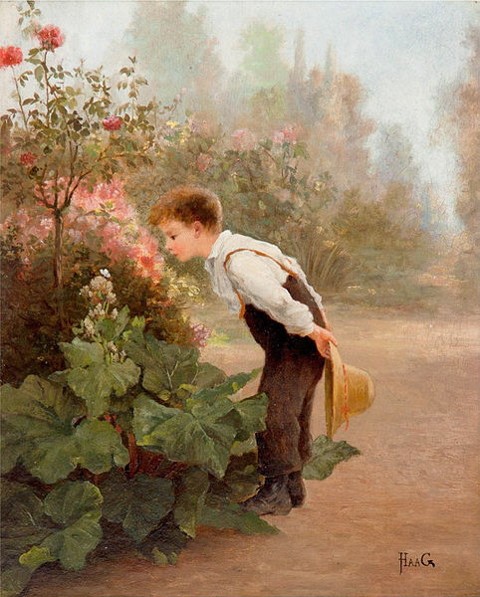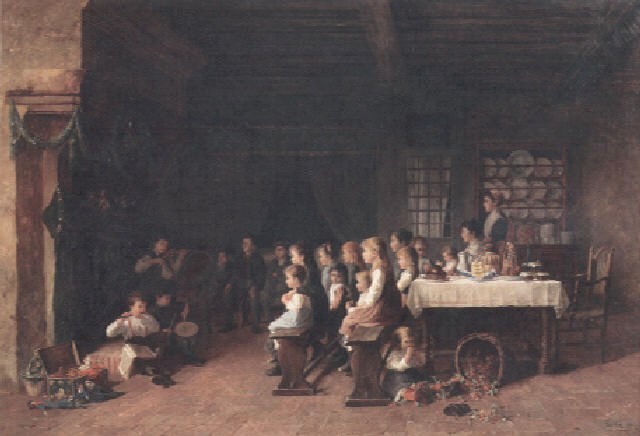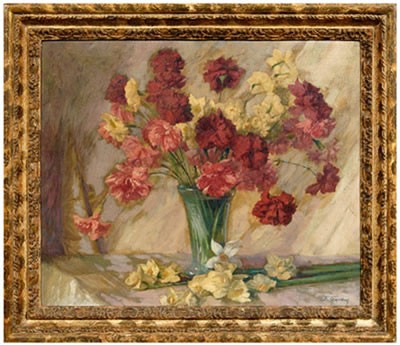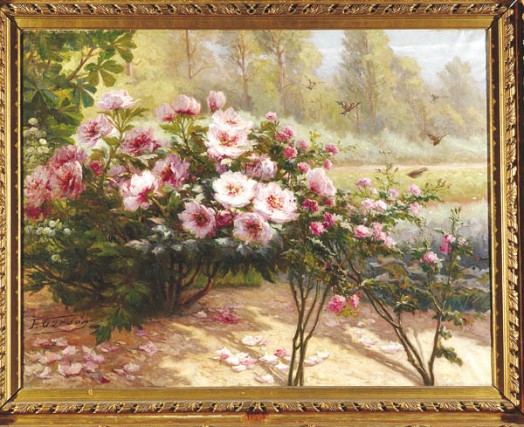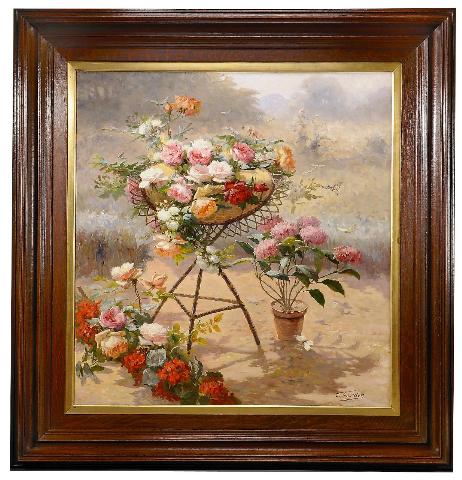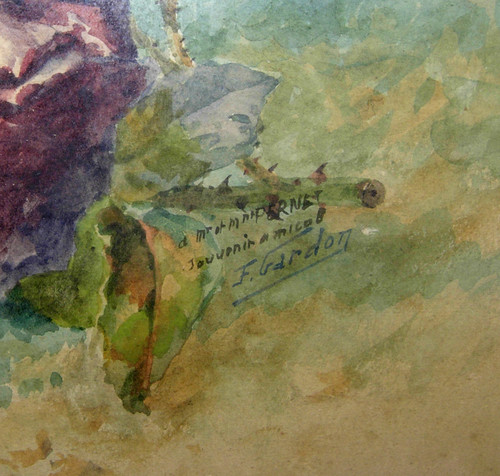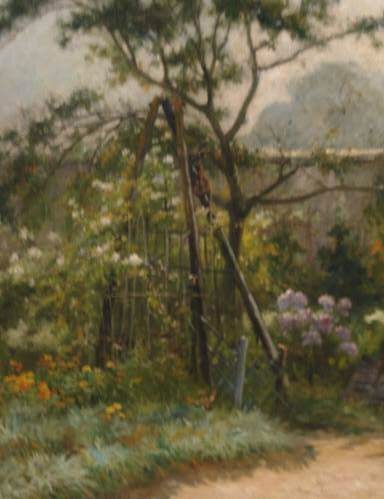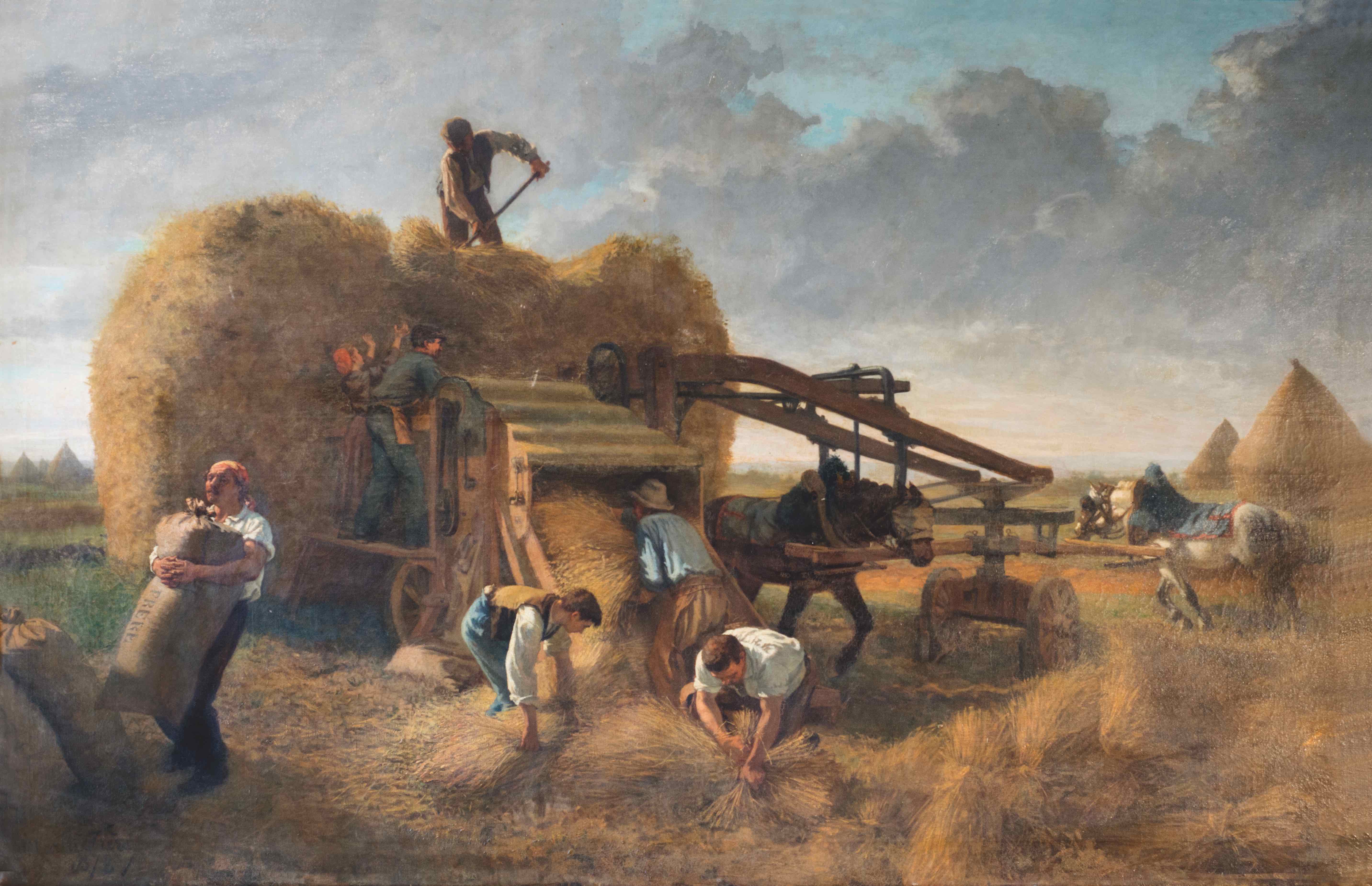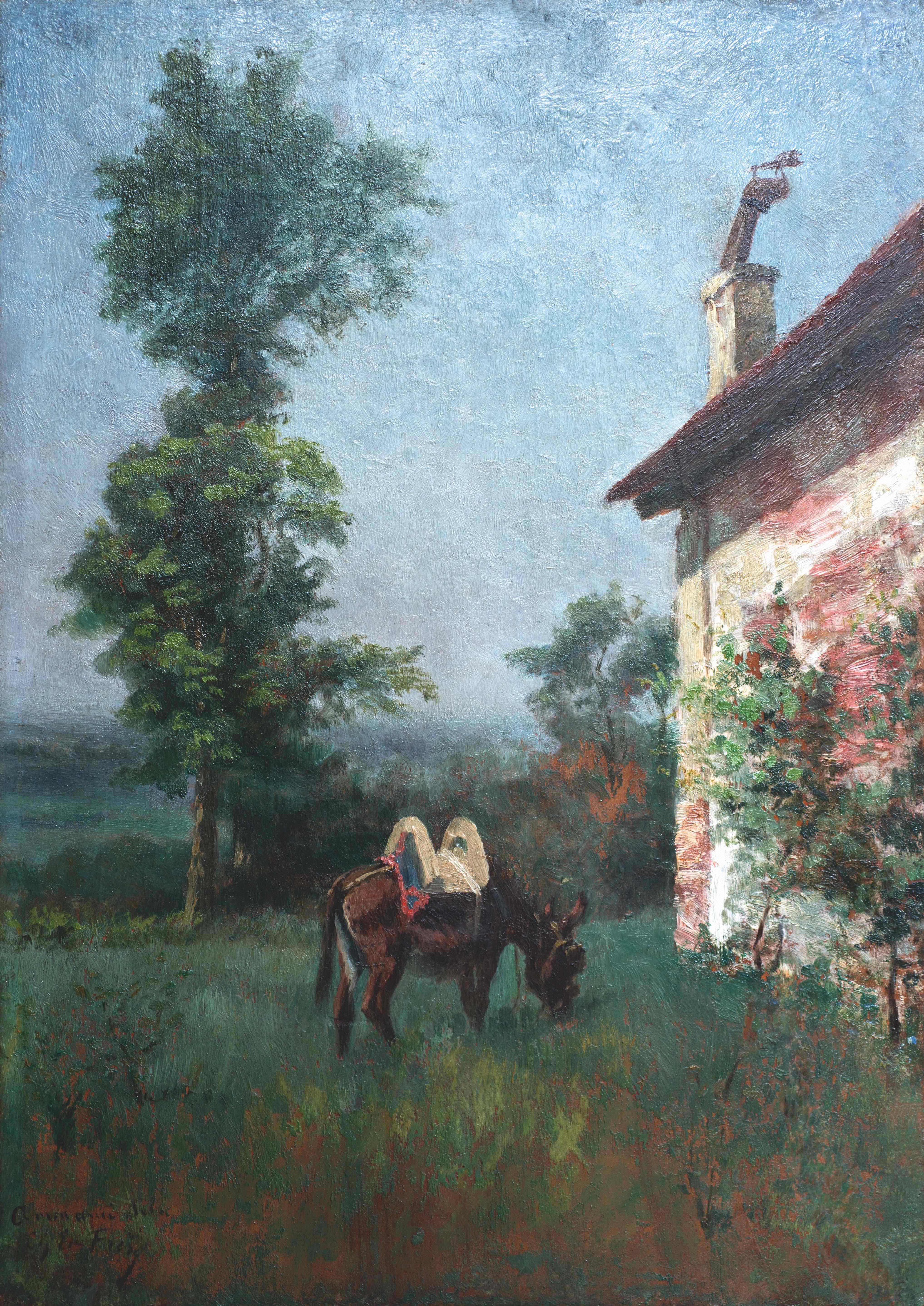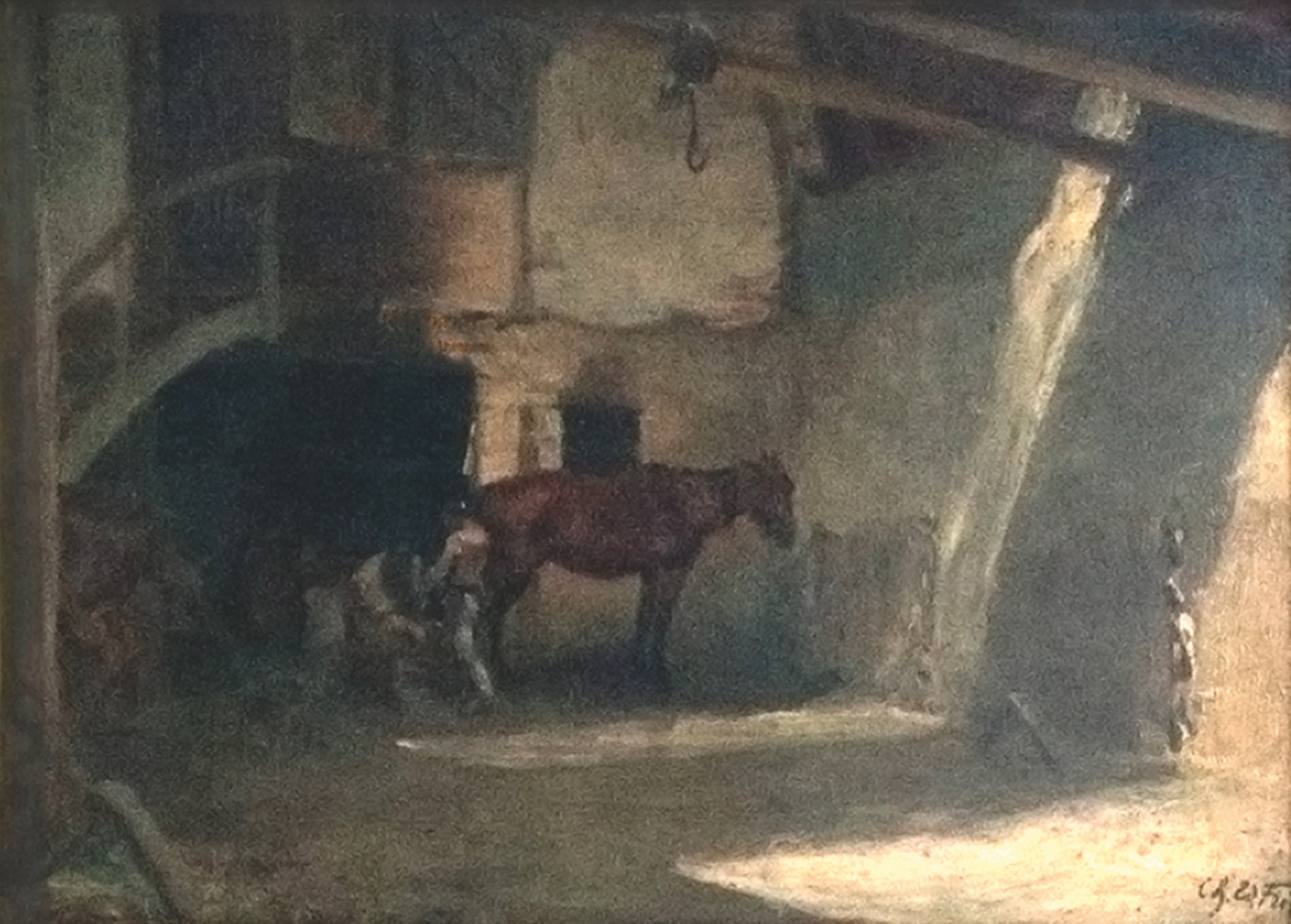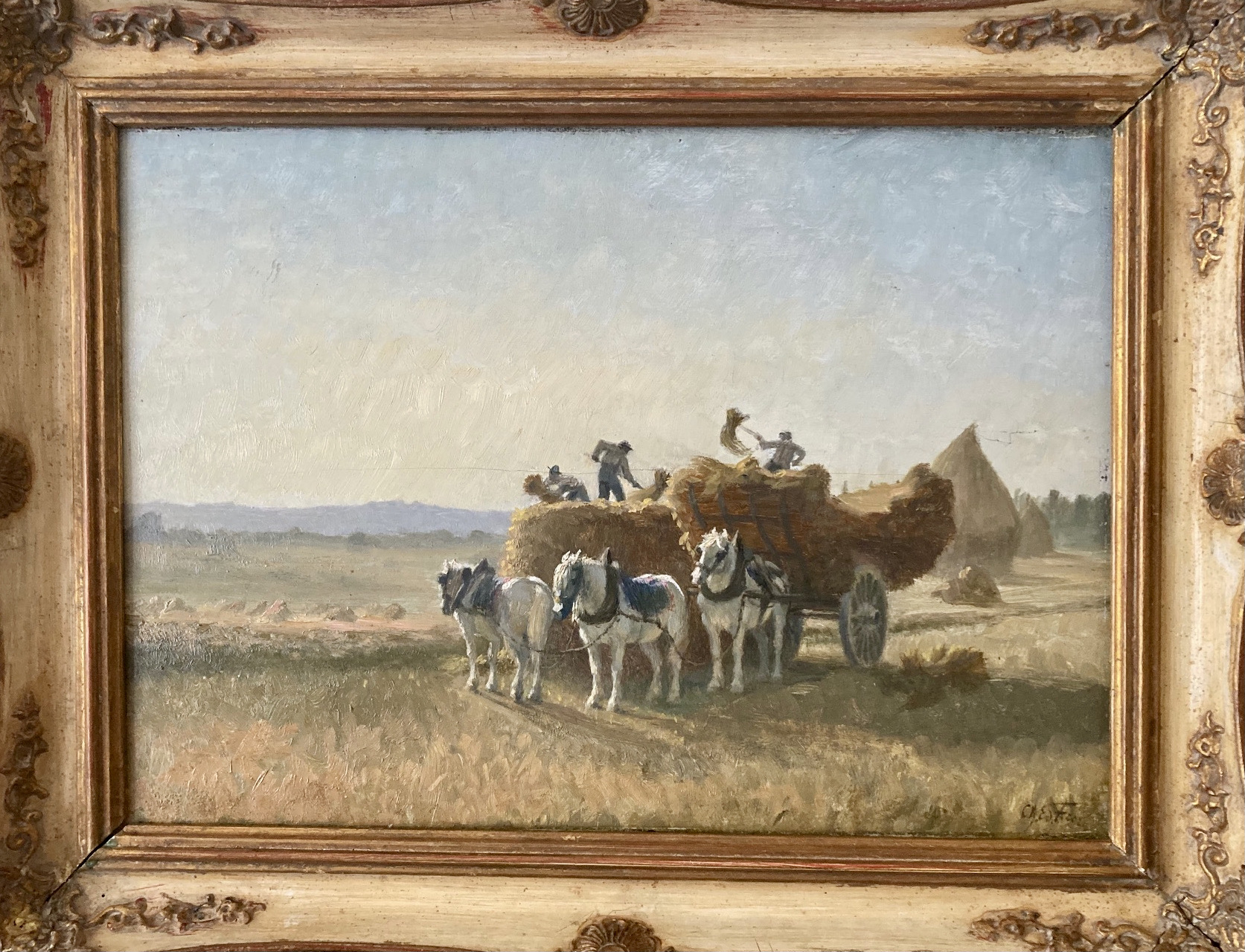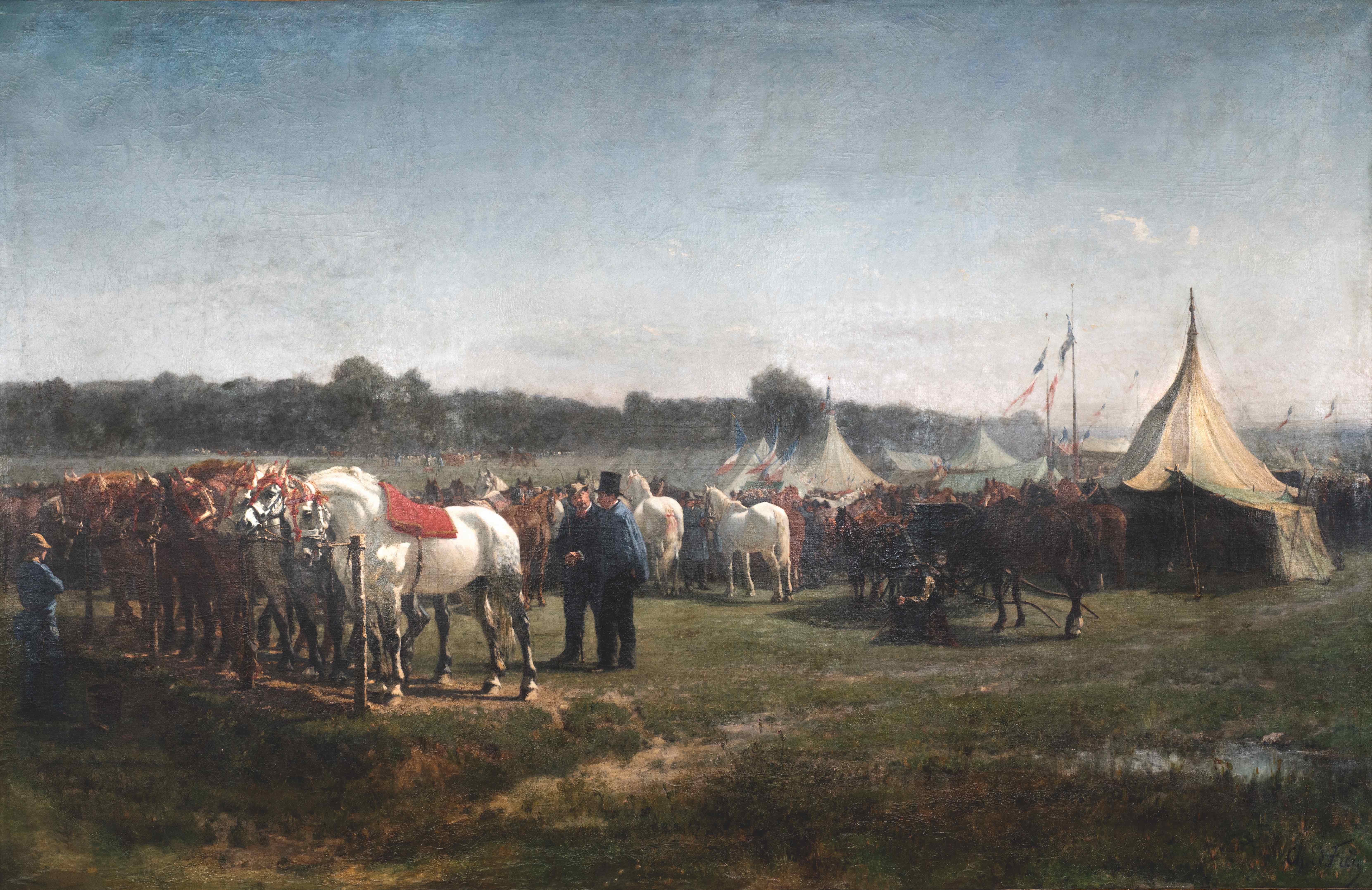Jules Paulin Lorillon-E
Paris 7°, March 6th 1836 – January 23rd 1912, Paris 10°
His situation as a Parisian jeweler at 12 Boulevard Magenta seems to indicate that an artistic career was not Jules Paulin Lorillon’s first vocation. However, he became interested in painting late in life and became a student of two landscape painters: Adrien Jacques Sauzay and Alexis Daligé de Fontenay.
In 1881, when he was 45 years old, he exhibited for the first time at the Paris Salon with his painting « Wheatfields in Auvers« . He exhibited again in 1882 and 1885 and again at the 1887 and 1888 salons, where he made his last appearance.
He moved to Ecouen on August 14, 1890. He acquired a property near the castle for the sum of 41,500 francs, with its vast shady park, covering an area of 1 hectare and 9 acres (today Charles-de-Gaulle Park) in the street named after his son. From then on, he divided his time between his home in Ecouen, his Parisian apartment and the house he owned in Beaulieu-sur-Mer.
The municipal archives of Ecouen testify to his interest in the village and the way he integrated. From his marriage was born Paul Jean-Baptiste, an industrialist who died on October 23, 1926 in Ecouen. In his will, he left an annuity of 3,600 F to his maid to maintain her grave in the Passy cemetery and bequeathed 100,000 F to the charity office. In recognition of this, the council decided to give his name to a street in the village.
For further information, please read the book “L’Ecole d’Ecouen, une colonie de peintres au XIXe siècle” (bilingual French-English).
